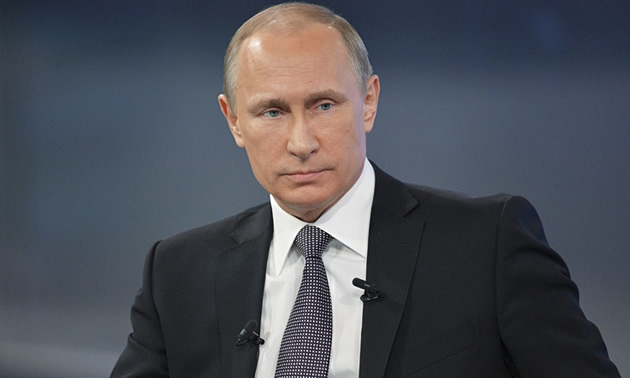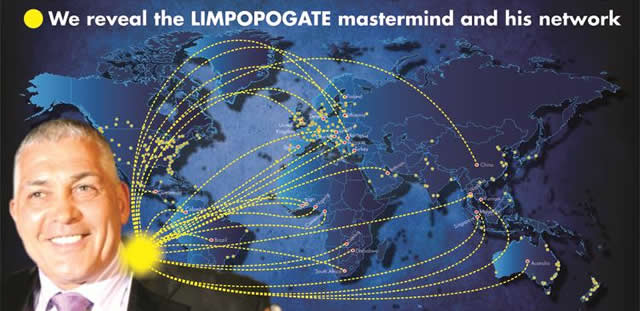Putin: He came, he saw and withdrew from Syria

Lucian Kim Correspondent
Vladimir Putin could hardly wait to drop the bombshell that he was withdrawing Russian forces from Syria’s civil war. In a meeting at the Kremlin broadcast on the evening news on Monday, the Russian president fidgeted in his chair, rubbed his eyes, and scratched his nose as Defence Minister Sergei Shoigu rattled off Russian military successes and Foreign Minister Sergei Lavrov reported on the tenuous peace process the nearly six-month air campaign had brought about. It was a perfect setup for the inevitable conclusion: After hearing so much good news from his top advisors, how could Putin help but decide that Russia’s work in Syria was done?
Putin’s performance was a striking contrast to then-US President George W. Bush’s infamous 2003 “mission accomplished” declaration aboard an aircraft carrier. Bush put on a show; the Kremlin’s surprise announcement was presented as bureaucratic procedure. With peace talks underway in Geneva and Syrian President Bashar al-Assad appearing a little too pleased with his Russian-backed gains on the ground, Putin is now exiting Syria as quietly as he entered it.
The Kremlin’s official rationale for fighting in Syria was that it was responding to a request by the “legitimate” government in Damascus to help combat international terrorism. Since the Islamic State had found recruits among Muslims from Russia and other former Soviet republics, Putin had an added incentive to bomb terrorists and stop them from returning home as battle-hardened extremists. To demonstrate Russia’s success in these anti-terrorism operations, Shoigu went through a checklist of accomplishments, from liberating 400 population centres and strengthening government control to cutting off terrorist supply routes and killing 2 000 foreign fighters from Russia.
Of course, the unofficial reasons for Putin’s Syrian adventure are just as important.
Throughout the air campaign, Syrian opposition groups and the United States claimed that Russia was mainly targeting moderate rebels opposed to Assad — and not Islamic State or al Qaeda affiliates. The true civilian death toll of the Russian bombing raids may never be known, but the air war had the effect of denying rebels the hope of achieving victory on the battlefield by reconquering rebel-held territory and edging in on Aleppo. Pounded by Russian bombs, the rebels gave up their refusal to talk with the government and headed for Geneva. Rescuing Assad was Putin’s No. 1 unofficial mission.
A second unofficial reason for Putin’s foray into Syria was the opportunity to demonstrate Russia’s restored military might. In fact, one of the main goals of the mission was to test new weaponry under combat conditions, a source in the Russian General Staff told the Kommersant newspaper on Tuesday.
Kalibr cruise missiles launched from warships in the Caspian Sea were fired at targets almost 1 000 miles away in Syria on October 7, Putin’s birthday. The tactical purpose was dubious — cruise missiles are typically used to penetrate air defences that the Syrian rebels could only dream of getting their hands on. Nevertheless, the use of the missiles did make US military planners perk up. Sorties flown by long-range strategic bombers based in Russia had a similar effect.
On Monday, Putin praised his troops for proving that they could fight “far from their own territory, without any common borders with the theatre of operations.” The president’s message was clear: After decades of decline, the Russian military can again strike at will, wherever it sees fit.
Yet the main unspoken reason for the Kremlin’s Syria mission was to re-establish Russia on the world stage — not just as a Middle East power-broker but also as a global player on par with the United States. After the annexation of Crimea and Russia’s intervention in eastern Ukraine two years ago, Western countries turned Putin into a pariah, avoiding him at international gatherings and hammering out the Minsk peace deal only to prevent a larger conflict. Becoming an indispensable actor in the Syrian civil war offered Putin a brilliant, if risky, way out of his isolation.
It worked. In September of last year, as Russia built up its forces in Syria and the rest of the world puzzled over the Kremlin’s intentions, US. Defence Secretary Ash Carter had his first phone conversation with Shoigu. Simultaneously, Lavrov built on his relationship with Secretary of State John Kerry to launch a number of diplomatic initiatives aimed at ending the fighting. On Monday, Lavrov trumpeted Russia’s close cooperation with the United States on two UN resolutions and co-chairing the International Syria Support Group.
The Syrian conflict even gained Putin the ear of US President Barack Obama again. The two presidents met during the U.N. General Assembly in New York in September; the very next day Russia began its bombing campaign. Obama, who was reluctant to reward Putin with a full-fledged meeting, awkwardly huddled with his Russian counterpart in a hotel lobby during the G-20 summit in November.
Following Monday’s announcement to withdraw from Syria, Putin spoke with Obama on the phone. The Russian read-out of the call ended with the formulation that “the conversation was held in a businesslike and frank manner.” From the Kremlin’s point of view, Russia is now speaking to the United States on equal terms.
Russia’s intervention in Syria’s civil war hasn’t been flawless. Russia lost Turkey as a partner, after a Turkish F-16 shot down a Russian Su-24 along the Syrian border in November.
The Kremlin also risked the radicalization of Sunni Muslims in southern Russia who oppose Putin’s support for Assad, an Alawite, and his Shiite allies.
None of these problems looked to be improved by sticking around longer, however. Many American observers, including Obama, predicted that Putin was wading into a quagmire. But the Kremlin has evidently learned the lessons of the Soviet Union in Afghanistan and the United States in Iraq — and took the first opportunity to get out.
True to form, Putin is holding his cards close to his chest, making his next move impossible to predict. He played a similar game in Ukraine, intervening with military force to rescue his proxies while engaging in peace talks to achieve a shaky cease-fire. Some commentators are wondering if Putin’s drawdown in Syria could mean a new escalation of hostilities in Ukraine. Others fear a new Russian front against the Islamic State in Libya or Afghanistan.
“Mission accomplished” shouldn’t be taken too literally. In the first stage of the Syrian withdrawal, half of Russia’s 60 war-planes and helicopters based in the country will be removed, Vedomosti newspaper reported on Tuesday. But Kremlin spokesman Dmitry Peskov said that Russia’s Tartus naval facility and Hmeymim air base will continue to operate and help observe the “cessation of hostilities.” That presumably means leaving the S-400 air-defence system, deployed to Syria after Turkey downed the Russian war-plane.
On Tuesday morning, Russia’s state-run Channel One showed Russian war-planes at Hmeymim fueling at dawn for the long flight home. Putin isn’t going anywhere, though. In Syria, as in Ukraine, he is leaving all options open. — FP.








Comments